HIGHLIGHTS
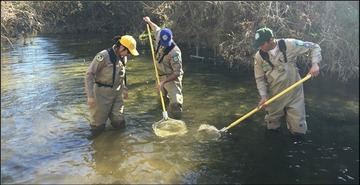
Army
National Guardsman Finds Inspiration in Veterans Fisheries Corps
As we observe Veterans’ Day this
Friday, we want to thank the men and women in our military for their dedication
and service. NOAA Fisheries is proud to be a partner agency in the Veterans
Fisheries Corps, a work development program in California. Please read our
interview with Specialist Philip Taylor, who describes how the Vet Corps opened
doors and inspired him to pursue a career in the sciences.
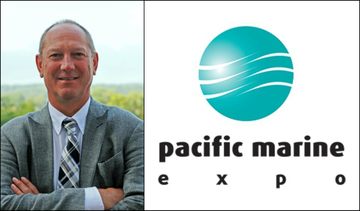
Join Chris
Oliver at the Pacific Marine Expo
Each year, NOAA Fisheries,
Weather, Charting, and Enforcement hold a joint exhibition at the Pacific
Marine Expo to engage with stakeholders and update them on the science and
services they depend on. This year’s Expo features Assistant Administrator for
Fisheries Chris Oliver as the keynote speaker. Please stop by the NOAA booth,
#715, the afternoon of November 16
to visit with Chris, and catch his keynote remarks at 3:15 pm. Hope to see you there.

Fisheries Celebrates
Technology Week 2017
Advancements in technology
improve how our scientists collect data, which in turn helps us make informed
conservation and management decisions. Join us this week for #TechnologyWeek as
we take a closer look at how NOAA scientists are using advancing technologies
to better collect fisheries data, study endangered species, and better
understand our changing ocean ecosystems.
NOAA Fisheries scientists are pairing underwater camera technology with bait
bags to improve assessments of reef fish and shark populations across the
Hawaiian archipelago.
Fisheries data collection has evolved
considerably over the past 50 years. From clipboards to conveyor belts, take a
look at how technology has transformed fisheries sampling on the high seas.
Scientists at the Northwest
Fisheries Science Center and their partners showed that LEDs are very effective
in directing Chinook salmon to escape windows Pacific hake trawl nets.
NOAA Fisheries’ Milford Lab, a
global leader in aquaculture research, is using cutting-edge technology to
study interactions between oyster farm gear and wild species.
Sonar work and habitat analysis
in the Chesapeake Bay region helped inform the Final Rule for Atlantic
sturgeon—and spotted some sturgeon in the process.
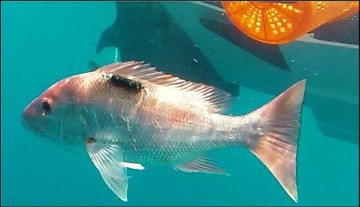
Bycatch
Reduction Engineering Program Report
NOAA Fisheries has long been
committed to reducing bycatch. The Bycatch Reduction Engineering Program
supports development of technological solutions and conservation practices that
minimize bycatch and bycatch mortality in federally managed fisheries. This
report summarizes the results for 18 projects awarded in 2014 and conducted in
2015.
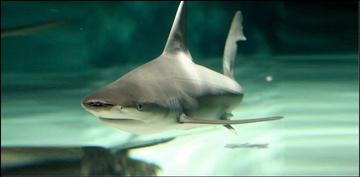
Applicants Sought for 2018 Shark Research Fishery
Commercial shark fishermen who
would like to participate in the 2018 Atlantic Highly Migratory Species shark
research fishery should submit both a completed shark research fishery
application and the required vessel information to the Atlantic HMS Management
Division by December 4.
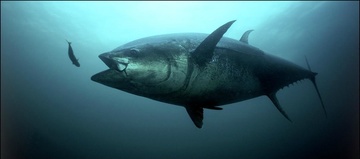
NOAA Issues Exempted Fishing Permit for Bluefin
After reviewing public comments,
NOAA Fisheries decided to issue an Exempted Fishing Permit to the Cape Cod
Commercial Fishermen’s Alliance. The permit will allow the Alliance to use
electronic monitoring to verify authorized gear use when fishing for,
retaining, and possessing bluefin tuna during a fishing trip on which
unauthorized gear is also onboard.
Alaska
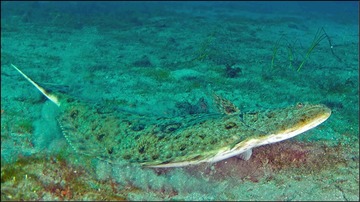
Enforcement
Focus on Subsistence Fishing
The Alaska Subsistence Halibut
Program permits rural residents and members of Alaska Native tribes to catch
halibut for themselves and their families. It is illegal, however, to sell
subsistence halibut commercially. NOAA’s Office of Law Enforcement is
increasing outreach efforts about the program.
West Coast
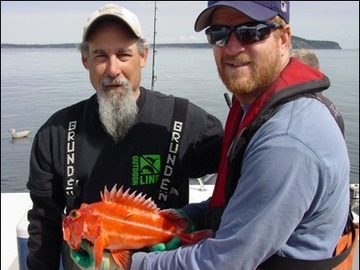
Yelloweye Rockfish and Bocaccio Recovery Plan
NOAA Fisheries finalized a
recovery plan for the Puget Sound/Georgia Basin Distinct Population Segments of
yelloweye rockfish and bocaccio. The recovery plan provides a roadmap for
restoring sustainable rockfish populations, benefiting regional fishing
opportunities and the health of the ecosystem.
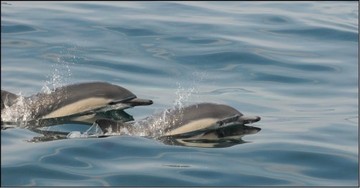
Climate
Shifts Shorten Marine Food Chain off CA
A new study found that
environmental disturbances such as El Niño shake up the marine food web off
Southern California, countering the conventional thinking that the hierarchy of
who-eats-whom in the ocean remains largely constant over time. The study analyzed
dolphin skin cells for chemical clues about their prey and what their prey had
eaten.
Pacific Islands

Proposed
False Killer Whale Critical Habitat – Open for Public Comment
By January 2, please submit your comments on NOAA Fisheries’ proposed
designation of critical habitat for the
Main Hawaiian Islands False Killer Whale Distinct Population Segment under the
Endangered Species Act. Critical habitat protections apply only to federal
actions, and NOAA works with partner federal
agencies to understand how a designation may affect these activities.
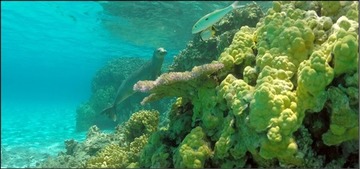
Exploring
Ecosystem Dynamics for Hawaiian Monk Seal Population Trends
Why are Hawaiian monk seal
numbers increasing in some locations but stabilizing in others? Scientists at
the Pacific Islands Fisheries Science Center used an ecosystem model to explore
the relative importance of factors that influence growth and mortality of monk
seals at two locations in the Northwestern Hawaiian Islands.
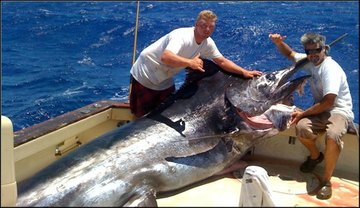
Ageing the
Grander Blue Marlin
In 2009, fishermen caught a 12.2-foot-long,
1,245-pound blue marlin—known as a “grander” blue marlin due to its size—off
the coast of Hawaii. Saving the head allowed
scientists to analyze the fish’s ear bones (otoliths) to determine its age. The
giant fish turned out to be only 20 years old.
Southeast

Unrigged
Hooks on Longline Vessels – Open for Public Comment
By November 14, please submit your comments on a proposed rule for
commercial bottom longline regulations in the Gulf of Mexico. Currently, reef
fish bottom longline fishermen can only carry 250 extra unrigged hooks onboard
their vessels; the proposed rule would lift that limit to make multi-day trips
more economical.

Florida
Restoration Plan – Open for Comment
By December 8, please submit your comments on the Florida Trustee
Implementation Group’s draft Phase 2 Restoration Plan proposing projects to
compensate for a portion of the lost recreational use in Florida caused by the
Deepwater Horizon oil spill. There will also be a public meeting on the project
on November 16 in Port St. Joe, Florida.
Greater Atlantic
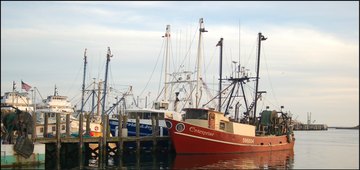
New England,
Mid-Atlantic States Lead Nation in Several Key Fisheries
NOAA Fisheries released the Fisheries of
the U.S. 2016 report last week. Once again, New Bedford, Massachusetts, was the
leading U.S. port by value, and American lobsters were the nation’s most
valuable landed species. Maine and Massachusetts ranked second and third
(behind Alaska) in the statewide value of landings. Read more about the
report’s findings for the New England and Mid-Atlantic regions.
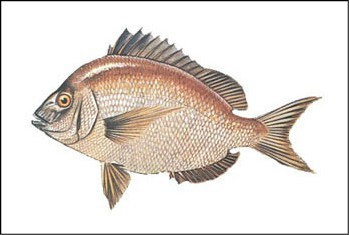
Proposed
Scup Quotas – Open for Public Comment
By November 22, please submit your comments on proposed revisions to
the 2018 quotas and projected 2019 quotas for the scup fishery. Compared to the
current specifications in place, this action would increase commercial quotas
and recreational harvest limits by approximately 40 percent.
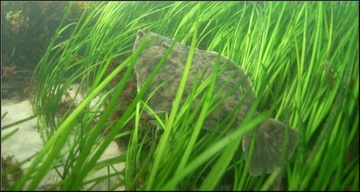
Omnibus
Essential Fish Habitat Amendment – Open for Public Comment
By December 5, please submit your comments on a proposed
rule that would revise the essential
fish habitat designations for all species and life stages managed by the New
England Fishery Management Council. The rule would also add Habitat Areas of
Particular Concern and Dedicated Habitat Research Areas and revise the spatial
management system and seasonal spawning protection measures.

Monkfish
Research – Request for Proposals
Projects selected through the
Northeast region’s unique Monkfish Research Set-Aside Program
are awarded fishing days rather than dollars, and they fund their work with the
proceeds from catch made on those days. Proposals for 2018/2019 monkfish
research support are due December 21.
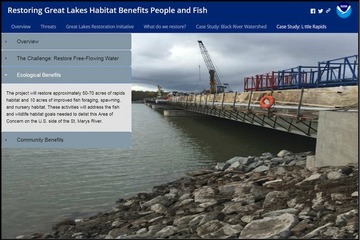
The Great
Lakes: A National Treasure
In 2010, 16 federal agencies launched
the Great Lakes Restoration Initiative to address the region’s unfortunate
legacy of damaged wetlands and degraded habitat. A new story map explores how
NOAA’s habitat restoration work in the Great Lakes through this initiative
benefits both people and fish.
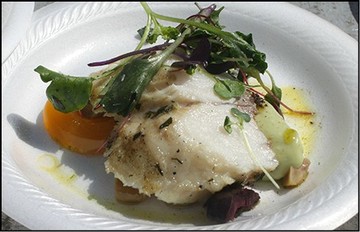
Blue Catfish
in the Chesapeake: Invasive, but Tasty
Blue catfish, native to the
central United States, were introduced to Chesapeake Bay rivers decades ago and,
in the absence of their natural predators, their numbers have grown
dramatically. Humans are stepping up to fill that gap. Harvest of blue catfish
in the Potomac River doubled from 2014 to 2015, reaching a dockside value of
more than $1.7 million.
|